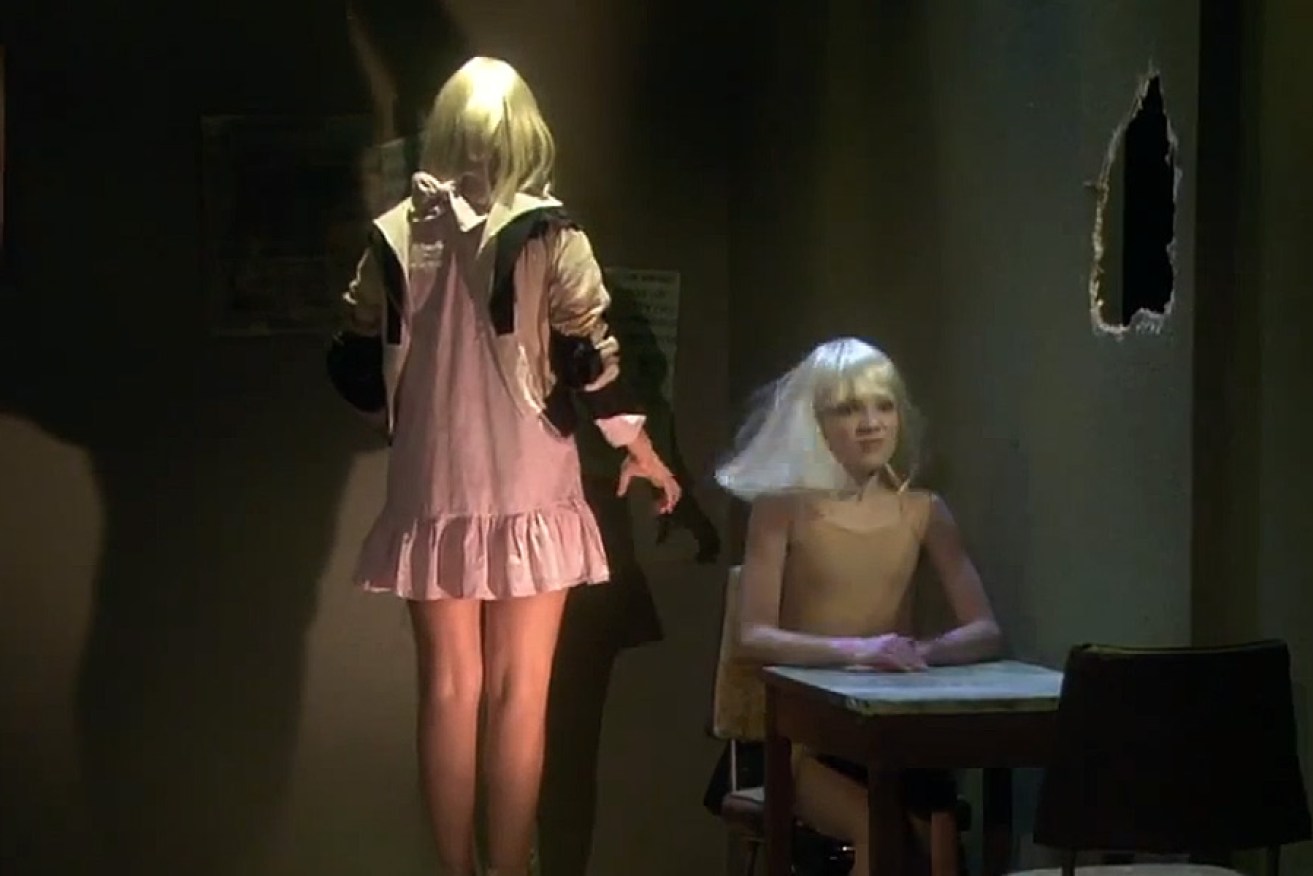How ‘faceless’ Sia became a hit in America

A still from the Sia performance on Ellen.
“When she performs, she chooses not to face the camera, but believe me, this is her singing live.” Those were the words spoken by Ellen DeGeneres before Australian indie pop singer-songwriter turned hitmaker Sia Furler performed her new single “Chandelier”on The Ellen Show.
Facing the wall, Adelaide-born Furler belted out the song while 11-year-old star of Dance Moms Maddie Ziegler danced behind her back in a matching blonde bob.
It certainly was a rare performance, given that Furler hasn’t performed the song live before, and has clauses in the contract for her upcoming album 1000 Forms of Fear that she’s not required to tour or do any media to promote the album. But the characterisation of Furler as a mysterious, anonymous and bizarre pop star would’ve come as a surprise to a few of her Australian fans.
Furler has emerged as a fresh face (well, not a face) on the US pop scene, stepping out from her behind-the-scenes role and into the spotlight, and has been touted as a bright new talent. But the 38-year-old is certainly not new to a lot of the world. The “performing without showing her face” thing? Well, that’s new.
Australian audiences are pretty familiar with Sia Furler, the performer and Sia Furler, the songwriter, but American audiences are really only familiar with Sia Furler, the hit factory.
Furler started her music career with a jazz-funk band at 17, before releasing her debut solo album, the trip-hop-infused OnlySee. It sold only 1300 copies, but the four albums that followed, up to her 2010 We Are Born, cemented her place in Australia’s indie pop scene, and drew some interest from the UK and the US. After the success of We Are Born, which went number two on the ARIA charts, Furler was “burnt out” from her solo career and wanted to retreat from the spotlight, focussing her energy on writing for other singers. She’d been touring Australia, the US and Europe extensively for several years, and came to the sudden decision to shun fame.
Soon enough, major pop acts came knocking, and within a few short years Furler became one of the hottest songwriters in the world. She’s written for Celine Dion, Beyonce, Christina Aguilera, Britney Spears, Kylie Minogue and Rihanna (whose single “Diamonds”was written by Furler in 40 minutes, before going to number one in 20 countries).
But how did one of Australia’s leading indie stars end up writing mainstream pop for mainstream stars? It all started with her work with Christina Aguilera on her album Bionic and the ballad “Bound to You”from the film Burlesque. And although both Burlesque and Bionic flopped, Furler’s contributions hadn’t gone unnoticed. Some of her indie comrades have, unsurprisingly, made accusations of “selling out”. But when you’ve got a knack for melodies and forthright wordplay like Furler does, throwing chart-topping pop together is a pretty easy job.
Furler is now returning to a solo career, but on her own terms, with the upcoming album 1000 Forms of Fear. The debut single “Chandelier”picks up on the radio-friendly dance-pop she’s written for other artists over the last few years, but lifts things up a notch with a bombastic chorus and a sparkling vocal that few of her contemporaries could match. The Huffington Post declared “Chandelier”to be the “best Rihanna song of the year”.
The US is in a flurry of fascination with Furler, and she would seem to be doing all she can to foster that fascination, by casting herself as a kind of anti-pop star. She made the cover of Billboard magazine last year with a paper-bag over her head emblazoned with the text: “This artist is responsible for over 12 million track sales, has a new single on the Hunger Games soundtrack and doesn’t want to be famous…”
She’s deliberately shunning fame by not using her face in any promotion for the upcoming album, but she’s using her idiosyncratic blonde bob as the “brand” for the upcoming album. She said in a recent interview with Dazed that she’s planning on putting a variety of different people in blonde bobs as the “faces” of the album for live performances and video clips.
“I don’t want to be famous. If Amy Winehouse was a beehive then I guess I’m a blonde bob. I thought, ‘well if that’s my brand, how can I avoid having to use my face to sell something’, so my intention was to create a blonde bob brand,” she told Dazed.
A statement on the nature of celebrity? An attempt to throw the focus onto her music? A form of performance art? Embracing her role as the “behind-the-scenes” worker, supporting the “icons” out front? Or maybe she just doesn’t want to be famous. Whatever the case, she’s one of the most intriguing personalities in the music industry. And even if she wasn’t, her songs put her above the rest.
This article was first published on The Daily Review.




